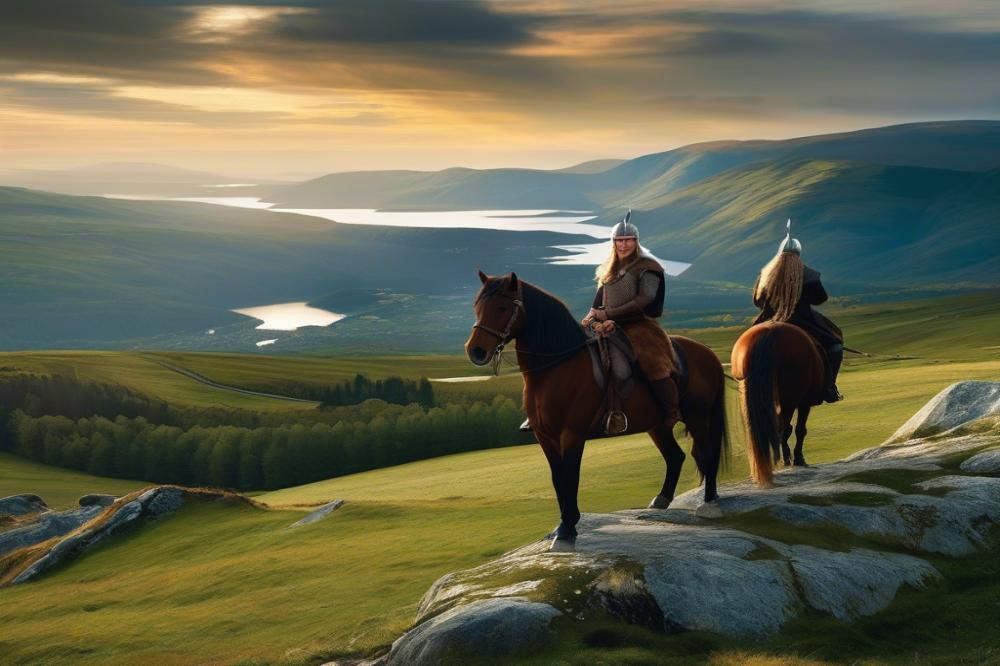The Role of Horses in Viking exploration and warfare
The history of the Norse people, often referred to as Horses-in-the-traditional-folk-music-and-dance-of-andalusia”>Vikings, is marked by their daring explorations and fierce warrior culture. From their homelands in Scandinavia, they journeyed across the seas to discover new territories. This expansion shaped not only their own society but also left a significant mark on the world. These seafaring people are particularly known for their longships, which allowed them to navigate rivers and oceans alike. However, another vital aspect of their daily life and military prowess often goes unnoticed.
Horses played a crucial role in Viking culture. They were more than just animals; they were symbols of status, power, and connection to the gods. Throughout their society, horses were used for various purposes, including transportation, agricultural work, and as vital assets in warfare. The relationship between the Vikings and their mounts was both practical and spiritual. Strong and reliable, these animals could carry warriors into battle or conduct important rituals in a community.
Exploration and combat were interlinked in the Viking way of life. Horses facilitated movement across the rugged terrain of Scandinavia and beyond. This enabled warriors to travel great distances when raiding or trading. Swift mounts allowed for quick retreats or the ability to launch surprise attacks. The presence of horses added an element of mobility, making them indispensable in their quests for both conquest and discovery.
In summary, the Norse people not only conquered new lands but did so with the steadfast aid of horses. The vital connection between these majestic animals and Viking culture underscores the importance of understanding their impact on exploration and warfare. Without horses, their achievements might have looked quite different.
Horses and Viking Exploration
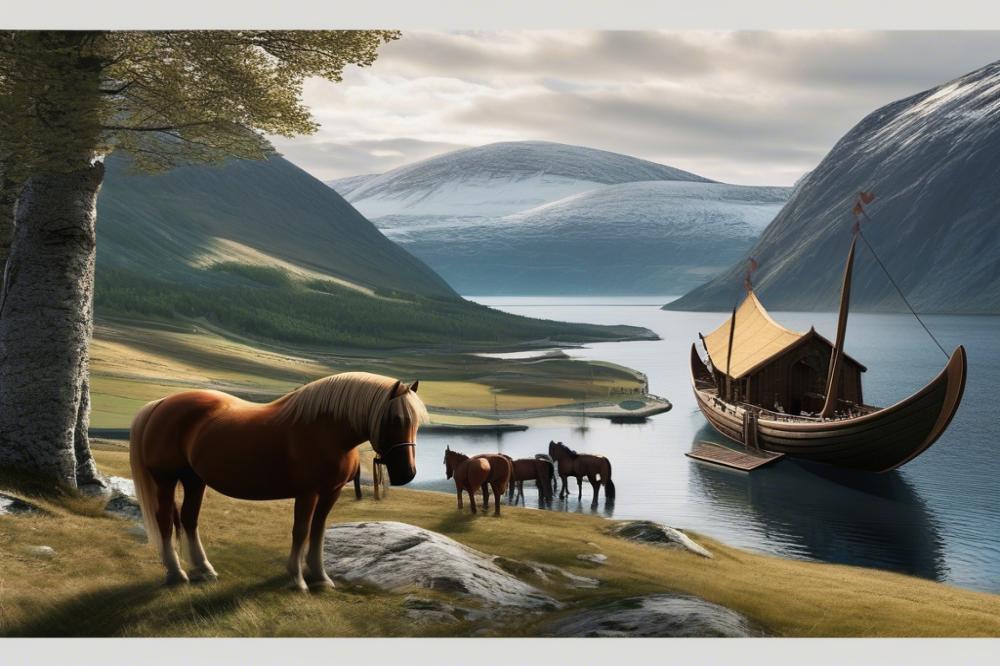
Traveling long distances was essential for the Norse during their explorations. Horses played a critical role in this venture. They were used to cover vast landscapes efficiently. Often, these sturdy animals could traverse rugged terrains where ships could not reach. This adaptability made them perfect companions for early explorers.
These creatures were not just transport animals; they were integral to trade. As the Norsemen traveled, they established trade routes that connected various regions. Well-trodden paths emerged, allowing for the exchange of goods and ideas. Settlements often grew around these routes, leading to thriving communities. Trading led to valuable alliances and increased wealth.
The impact of horses on exploration extended beyond goods. They aided in reaching new territories, allowing for quicker scouting of unexplored lands. Explorers relied on their speed and endurance. As Norsemen ventured into unfamiliar regions, horses provided a means to gather resources and survey the land. Moreover, these animals facilitated contact with various peoples, broadening cultural exchanges.
In conclusion, horses were vital to Viking exploration, making long travels manageable and paving the way for trade and settlement. Their role extended across continents and shaped how communities interacted. These magnificent creatures helped lay the framework for what would become significant trade networks in history.
Horses in Viking Warfare
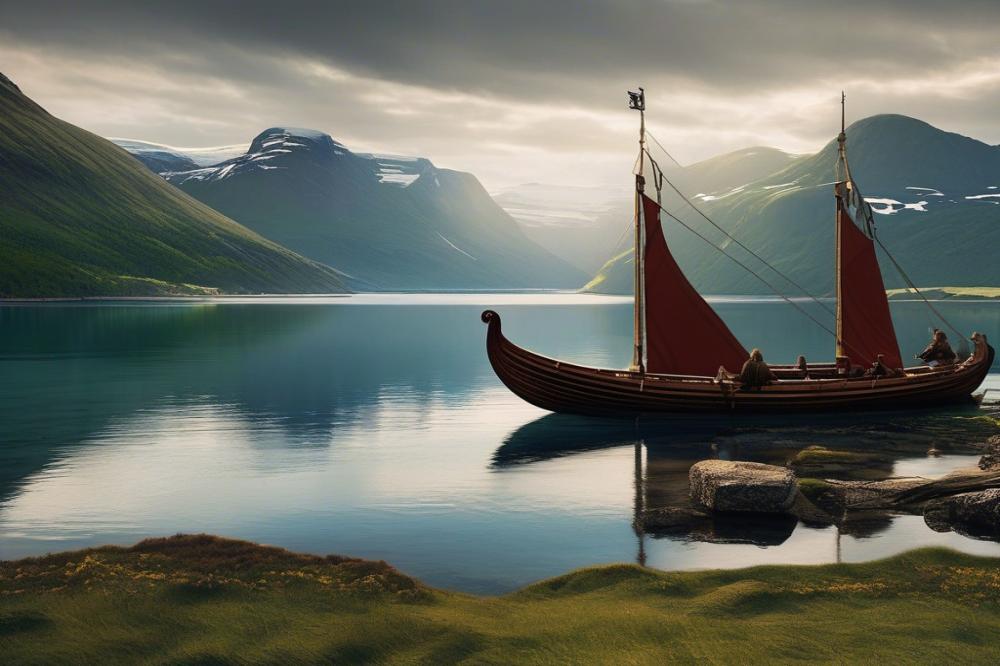
Horses played a significant role in warfare during the Viking Age. Cavalry tactics varied widely among leaders. Many relied on the speed and agility of their mounts to outflank opponents. Others used horses to help transport warriors and equipment quickly to the front lines. The ability to move rapidly gave them an advantage in battles and skirmishes.
In raids, horses served a vital purpose. Raiders often dismounted to engage in close combat, but they relied on their steeds for quick retreats. The presence of horses allowed for greater mobility in hitting and running tactics. These strategies often caught enemies off guard. Surprise was key to successful raids in enemy territory.
When comparing the use of horses in warfare, other cultures had different approaches. The Roman Empire, for example, utilized heavy cavalry to charge enemy lines. In contrast, Viking leaders combined horse-mounted warriors with infantry. This diverse tactic allowed for a blend of speed and strength. Furthermore, many warriors in Asia also trained extensively in mounted combat. Each culture adapted their strategies to fit their unique circumstances.
Training horses was not solely about riding. Grooming and caring for horses were part of a warrior’s duties. Maintaining a strong bond with their animal was crucial. A well-trained horse added to the effectiveness in battle. Loyalty between horse and rider often mirrored the strong bonds among warriors themselves. This relationship proved beneficial in the heat of conflict.
Terrain played a key role in how these beasts were deployed. In open fields, cavalry could charge effectively. In wooded or mountainous areas, that advantage diminished. Viking leaders had to assess each battlefield carefully, adapting their strategies based on these factors. Understanding the land was just as important as having skilled fighters.
Horses in Norse Mythology
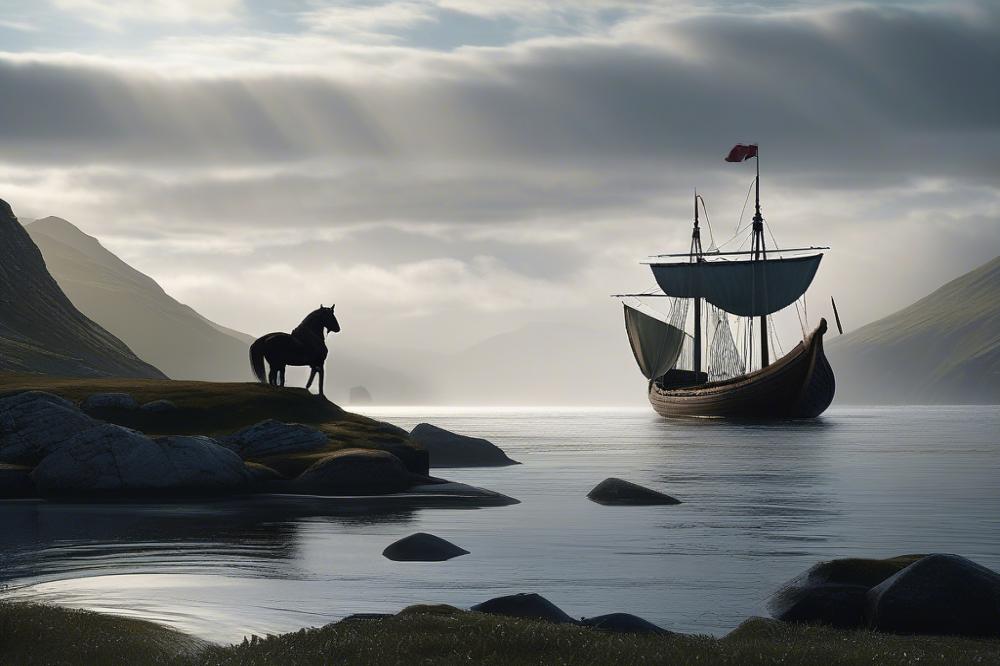
The importance of horses in Norse mythology cannot be overstated. These animals were often viewed as symbols of strength and loyalty. One of the most famous horses is Sleipnir, the eight-legged steed of Odin. Sleipnir is not only remarkable for his number of legs but also for his speed and ability to traverse between worlds. His unique traits reflect the complex relationship between humans and horses in Norse society.
Another notable horse is Hófvarpnir, which belonged to the giant Hrungnir. This horse is a representation of power, showing how horses were linked to significant figures in myths. In stories, horses often embody attributes such as bravery and nobility. They were seen as companion creatures, enhancing the image of warriors. Myths often highlighted these traits through legendary tales.
Mythology shaped how people perceived horses in their daily lives. It contributed to the belief that steeds were not just animals; they held spiritual significance. Strong connections existed between gods, heroes, and their equine companions. Each story served to elevate the status of horses in the eyes of the Norse culture. They became symbols of honor and heroism, deeply tied to the identities of celebrated figures.
The relationship between gods like Odin and their horses conveys important cultural messages. This bond suggested that mastery over nature and its creatures was crucial for a warrior’s success. Additionally, horses often appeared as gifts or sacrifices to the gods, underlining their importance in rituals. The reverence shown towards these creatures highlighted their multi-faceted role in society.
In warfare, horses symbolized status and power. A warrior with a fine steed commanded respect and fear. The tales of heroes riding into battle resonate throughout Norse lore. These narratives contributed to a broader understanding of the role of horses. They were not just beasts of burden but vital components of heroism and exploration.
Shipbuilding and Horses
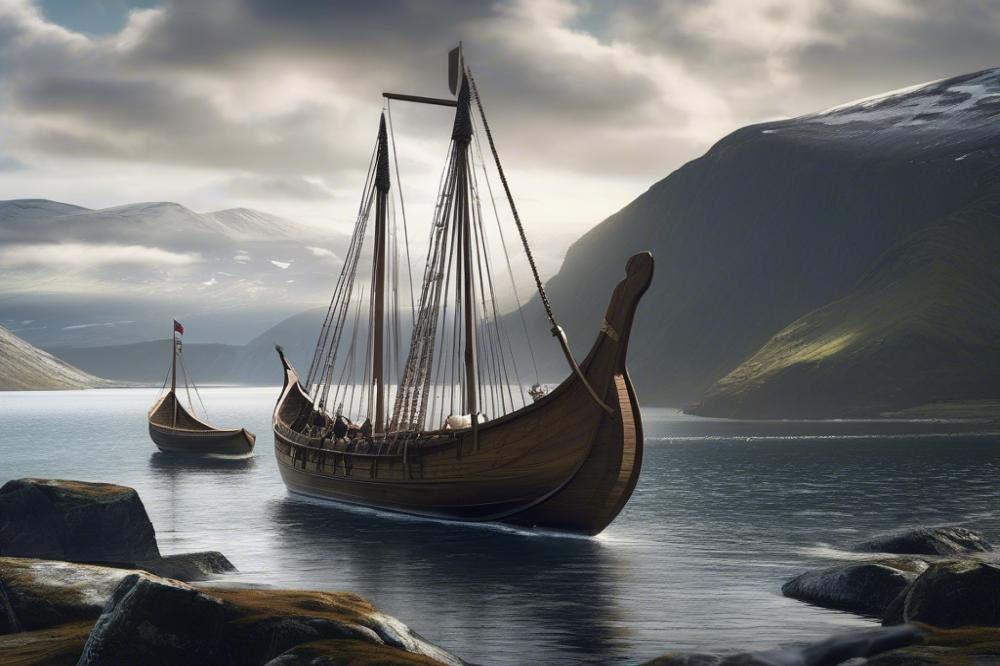
Advancements in shipbuilding played a crucial role in the way horses were used by seafaring groups known for their expansive travels. Longships were engineered to be both swift and sturdy. These vessels allowed for quick journeys across oceans, making it possible to bring horses along on explorations and military campaigns. Integrating horse transport with naval capabilities changed the dynamics of movement and strategy. It wasn’t just about crossing water. Horses could be quickly unloaded upon arrival, providing immediate access to mounted troops.
Mobility improved dramatically because of this combination. Instead of relying solely on foot soldiers, armies could mobilize quickly and adapt to changing landscapes. This flexibility was key in warfare. The ability to move quickly over land, combined with naval transport, created advantages that changed how leaders planned their strategies. Troops could ride into battle, surprising their enemies. The element of shock became an important factor.
Furthermore, enhanced ship designs influenced how horses were transported. Special compartments were created to keep horses safe during voyages. This unique approach meant that animals arrived fit for service rather than fatigued. Livestock care became a consideration in naval planning. Moreover, without ships, horses would not have reached new territories. Hence, the integration of equine mobility with maritime technology transformed both daily life and military tactics.
In summary, the relationship between shipbuilding and horse use was vital. Effective use of ships meant that horses became essential in both exploration and warfare. This synergy of travel methods facilitated a level of organization and effectiveness that was previously unattainable. Leaders relied on well-prepared forces for rapid response in defensive situations or territorial expansion. Coordination between maritime and land resources was a defining characteristic of their operational success.
Chariots and Their Military Significance
Chariots played an important role in the military strategy of the Norse during their explorations. Historical evidence suggests that various forms of chariots existed, used mainly in ceremonial contexts and not as commonly in warfare as in other cultures. Archaeological finds, like drawings and remnants, indicate that these vehicles were often associated with leaders and elite warriors.
Differences between Norse chariots and those from other societies are striking. Typically, most cultures adopted chariots that were lightweight and designed for speed. However, the chariots seen in Norse explorations were often heavier and sturdier, built to move across rugged terrain. This robust construction allowed for the transport of larger groups of people and equipment, particularly during raids.
Role of Chariots in Warfare Scenarios and Leadership
In battle, chariots served multiple purposes. They acted as mobile command centers where leaders could oversee troops and coordinate efforts. When chariots were used, they allowed skilled archers to unleash arrows from a relatively safe position while still moving with the army. Such tactics helped to maintain an upper hand against foes.
Moreover, chariotry demonstrated status and power. Leaders used these vehicles to project strength and influence. The presence of a chariot on the battlefield often indicated that important figures were involved, rallying troops and boosting morale. Being seen in a chariot could enhance a warrior’s reputation significantly.
Overall, while the chariot’s role in Norse warfare was not as prominent as in other civilizations, its military significance cannot be dismissed. The unique design and functions adapted by the Norse allowed for strategic advantages, reflecting their innovative spirit. As they faced various challenges in exploration and combat, the chariot became more than just a mode of transport; it transformed into a symbol of leadership and tactical planning.
Final Thoughts on the Role of Horses
Horses played a vital role in the exploration and warfare of the Norse people. These animals were more than just a means of transport; they were essential companions in both everyday life and on daring voyages. Strength and stamina allowed horses to navigate the rough terrains and long distances characteristic of Nordic landscapes. Their presence on ships during expeditions illustrated the importance of equestrians in Viking culture.
This relationship between humans and horses is not unique to the Norse. Many cultures throughout history have relied on these noble creatures for similar reasons. From the Mongolian steppes to the plains of the American West, horses have united people under shared goals of discovery and defense. This shared reliance attests to their importance across different societies, highlighting a common thread in human activity.
Reflecting on the legacy of these magnificent animals reveals much about our ancestors. Their influence on transportation, trade, and conflict shaped entire civilizations. The horses used by the Norse have left indelible marks on history, forming tales of bravery and adventure that resonate even today. As we delve into the past, we should remember the horses that carried these explorers and warriors to new horizons.
In conclusion, the horses of this era remind us of the strong bond between humans and animals. They served not just as mounts but as integral players in the story of exploration and warfare. Understanding their role gives us a deeper insight into how societies functioned and thrived. The legacy of these powerful companions is a reminder of the vital partnerships that exist in our world.

